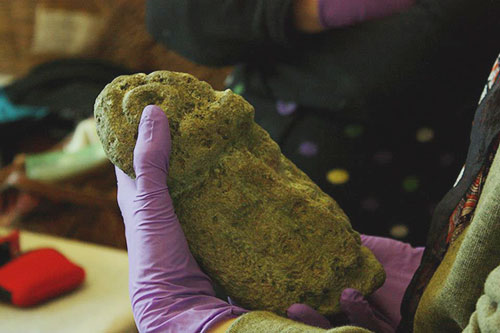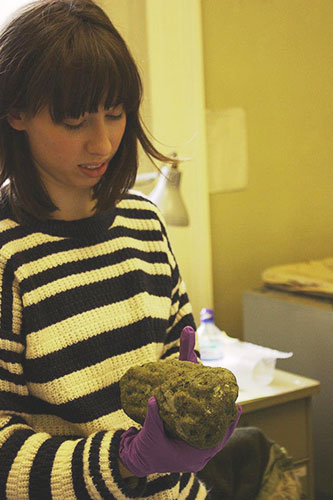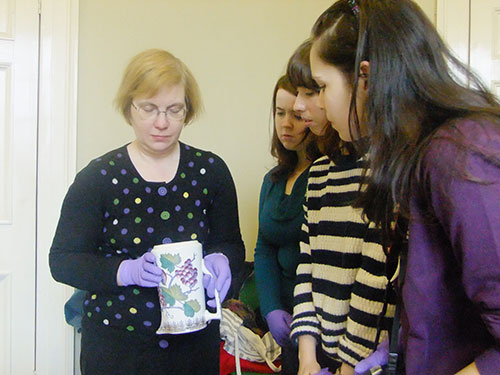Our Scotland Creates volunteers are working with curators and other staff from National Museums Scotland to create an exhibition on the theme of Scotland Creates: A Sense of Place. Recently, the volunteers visited our storage facility at Leith Custom House to investigate some objects with curator Val Boa, from the McLean Museum and Art Gallery in Greenock, one of four partner museums taking part in the project.
Val Boa from the McLean Museum and Art Gallery in Greenock joined us in Edinburgh to look at National Museums Scotland’s Clyde pottery collections at Leith Custom House. The Clyde Pottery Company, in Greenock, produced wares from 1816 to the early 1900s, and was an important industry in Inverclyde. McLean Museum has the largest collection of Clyde pottery in the world, and Val is an expert in the subject.
During the session, however, Val baffled us all with an intriguing object, which a member of the public had brought into the McLean Museum.

This gargoyle-like owl stumped us all.


Earlier in the session, Val and Lindsey Mcgill, Assistant Curator of Scottish History, had talked us through the selection of Clyde pottery and showed us how to spot the real McCoy.

Artefacts of questionable authenticity were not uncommon it would seem, with museums often unwittingly acquiring fakes for their collections, though we are told these counterfeit objects are getting easier to tell apart from the real deals.

Val then presented her stone companion to Lindsey who – after some musings of her own – called upon the expert help of the Museum’s resident archaeologists. After the initial fear that their brains would not be at our disposal due to the infelicitous timing of luncheon, hope was restored with the promise of a visit in ten minutes.
Fraser Hunter, Principle Curator of Iron Age and Roman Collections, arrived from the other end of the building, knowledge at the ready to vanquish our blundering preconceptions. We awaited his verdict in an atmosphere of piercing anticipation.


The conversation passes in a blur. ‘Aha’, ‘yes that’s right’, ‘really’, ‘a fake’, ‘well I did wonder’, ‘how fascinating’ and so on.
As it turns out, the area from which the pottery comes was a hotspot for faked relics. Fraser believed it was one of a number of objects planted around a crannog in the Inverclyde area around a hundred years ago. So our little friend most likely belongs to that trend of forged objects.
Watch this space for more revealing behind the scenes stories…

